News in Brief
-
 Anthropology
AnthropologyEarliest case of a battered child found in Greece
A baby living in Athens around 2,200 years ago was probably beaten to death.
By Bruce Bower -
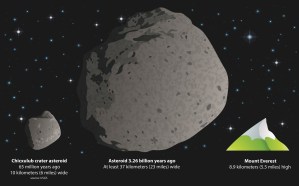 Earth
EarthHuge space rock rattled Earth 3 billion years ago
An asteroid almost as wide as Rhode Island may have plowed into Earth 3.26 billion years ago, leaving a trace in South Africa’s Barberton greenstone belt.
-
 Anthropology
AnthropologyAncient boy died surprisingly young
Imaging analysis reduces age of Australopithecus sediba youngster from 9 to 7.5 years old.
By Bruce Bower -
 Genetics
GeneticsFive mutations could make bird flu spread easily
Handful of alterations can turn H5N1 bird flu into virus that infects ferrets through the air.
-
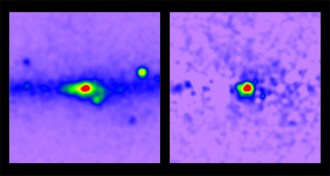 Cosmology
CosmologyGalaxy’s gamma-ray glow may expose dark matter
An excess of gamma rays at the center of the Milky Way could be a signature of dark matter.
By Andrew Grant -
 Computing
ComputingApp could cut jet lag short
A new app calculates lighting schedules to help travelers adjust quickly to new time zones.
By Meghan Rosen -
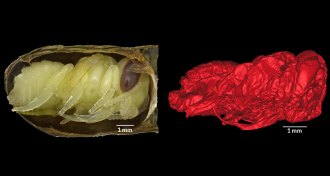 Paleontology
PaleontologyLa Brea Tar Pits yield exquisite Ice Age bees
Ancient bee pupae snug in leafy nest give clues to Pleistocene climate.
By Susan Milius -
 Cosmology
CosmologySpeed of early universe’s expansion determined
The rate known as the Hubble constant is measured with great precision for the universe of 11 billion years ago.
By Andrew Grant -
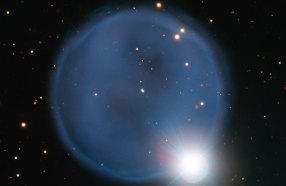 Astronomy
AstronomyDiamond ring shape formed by dead and living stars
Abell 33 is a planetary nebula, the remains of a star, beautifully aligned with another star.
-
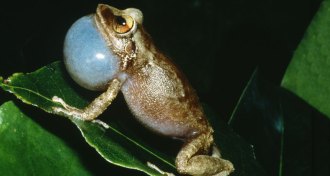 Animals
AnimalsCoquí frogs got smaller, squeakier as climate warmed
As temperatures climbed in Puerto Rico, the calls of male coquí frogs became higher pitched.
By Susan Milius -
 Life
LifeCommon lung infection suffocates with single protein
A Respiratory Syncytial Virus, or RSV, protein creates clumps of dead, bloblike lung cells.
By Beth Mole -
 Computing
ComputingA tale of touching tubes
Mathematicians solve the challenge of putting seven cylinders in contact without using their ends.